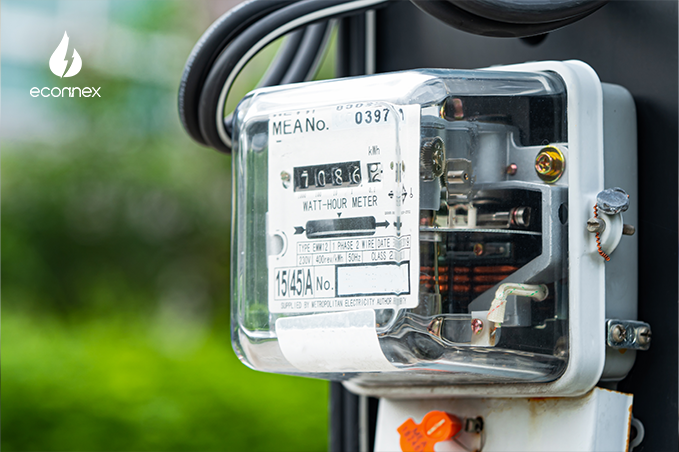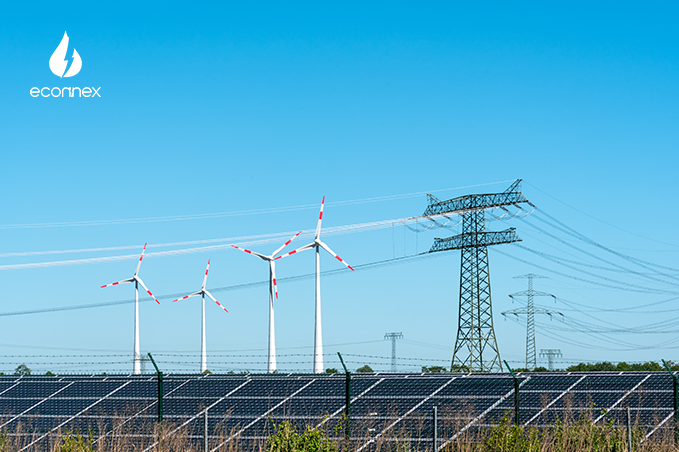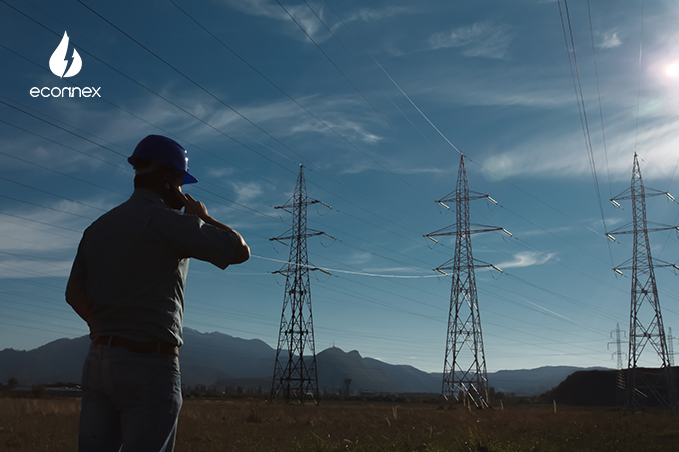Electricity and Gas Meters Explained

Published on 03/09/2023
By Rajesh Kumawat
Energy Comparison
Looking to save on your energy bills? Knowing how electricity or gas meters work will give you great insight into how your energy usage is charged. It will also help you understand which energy plans could be compatible with your electricity meter. Once you know this, you can compare energy plans to see where you might be able to save. So, let’s get started.
There are three types of electricity meters used in Australian homes. There are Flat-Rate Meters, Interval Meters, and Smart Meters. Here’s how they work.
A Flat-Rate meter is also known as a single-rate or accumulation meter. It measures the electricity used since its installation. With a Flat-Rate meter, electricity usage is charged at one single, flat rate (as the name suggests). As they only record usage at one rate, Flat-Rate Meters don’t allow householders to take advantage of variable tariffs. Examples of variable tariffs include peak and off-peak rates.
If you have a Flat-Rate Meter, it will be either electromechanical (and look like a car odometer) or electronic (and look like an LCD clock).
Reading a Flat-Rate meter
Flat-Rate meters require a meter reader to come to the property every three months. If your energy retailer offers monthly billing, they will estimate your usage based on your previous bills. Meter readings will appear on your electricity bill as a five (5) digit number.
If you have a Flat-Rate Meter and would like to keep track of your usage, simply write down or take a photo of the five (5) numbers displayed on your meter each month or quarter and subtract your previous reading from the newest reading to calculate your monthly or quarterly usage.
Tip: To read an electromechanical-style meter with several clock faces or dials, note the number on each of the 5 dials starting from left to right (ignoring the small dial labeled 1/10). If the hand on the dial is sitting between two numbers, use the lower number. If you have an electronic-style meter, press the ‘display’ button to view the reading options and note your readings.
Key points
All Interval Meters (also known as time-of-use meters) are electronic and measure electricity usage every 30 minutes. If you have an Interval Meter, an electricity retailer can offer different rates for different times of the day. This means you may be able to save money with off-peak power.
Meter readers need to visit your property to read the meter in person. They do this by attaching an optical probe to the meter to download the meter’s data into a handheld computer. This information is then validated by the energy distributor’s systems. The distributor then sends the reading to your energy retailer, so they can calculate your next bill.
If you would like to read your Interval Meter, simply note the number of kilowatt hours (kWh) displayed. Most Interval Meters are digital. If it has a clock or dial-style meter, write down the individual numbers shown on the dials going from left to right.
Note: The display of an Interval Meter is programmed to show the date and time (in Eastern Standard Time as required by the National Electricity Rules) as well as the total kilowatt hours (kWh).
Also known as digital meters, Smart Meters are the newest and most advanced type of electricity meter in Australia. Similar to Interval Meters, Smart Meters measure electricity usage in 30-minute intervals. This allows for time-of-use pricing, such as off-peak rates.
Smart Meters are ‘smart’ in that they are connected to the internet.
Being connected to the internet, the details of your electricity usage are sent directly to your energy retailer. This eliminates the need for a meter reader to visit your property. It also allows for more accurate readings, as no estimates need to be calculated.
To read a Smart Meter yourself, simply check the number of kilowatt hours (kWh) shown on the meter’s digital screen. Some Smart Meters also display the electricity used every 30 minutes, or from the previous week or month. Some Smart Meters even allow you to set energy goals for reducing energy consumption. You may also be able to track your electricity usage via an in-home display or app (available from your energy retailer).
Tip: If you are thinking about upgrading to a Smart Meter, check with your electricity retailer if there is a charge. If there is a charge, consider whether the savings of using a Smart Meter will outweigh the cost of the meter.
Electricity meters are usually installed on the external wall of properties to allow for easy access. However, if you can’t find your meter, try and locate where the power enters your property. This may lead you to the location of your meter.
For houses, the electricity meter is usually located near the front door, or on one side of the house. For units, apartments, and townhouses, most electricity meters are usually located together in one central area.
If you need assistance locating your electricity meter, contact your electricity retailer.
Great! Compare your meter reading with the reading on your electricity bill.
There are two major types of gas meters fitted to Australian homes: Metric and Imperial. The type of gas meter you have will depend on the gas pressure available in your area and the type of regulator on your gas meter. Both types of gas meters offer the same tariffs on gas usage.
The Gas Metric Meter is the most common. A metric meter will show your gas consumption in a line of numbers, much like a car odometer. This is expressed in cubic meters (M3).
A meter reader will need to visit your property to record your gas usage.
To take a reading yourself, note down the numbers and decimal point reading from left to right. In megajoules (MJ), subtract the prior reading from the current reading, then multiply this amount by the heating value and pressure factor listed on your gas bill.
Tip: To convert cubic meters to megajoules, you can use this calculation:
Cubic Meters x 38MJ/cubic meter = MJ
A Gas Imperial Meter is very similar in appearance to the Gas Metric Meter.
With a Gas Imperial Meter, the display will show your usage in cubic feet (ft3), instead of cubic meters (M3). It also may have a ‘clock’ face with small dials to show your usage.
A meter reader will need to visit your property to record your usage.
To take a reading, check which number the hand is pointing to on the first four dials from left to right. If a hand is pointing between two numbers use the lower number. However, if the hand is between 0 and 9, record it as 9. (You can ignore the additional dials labeled ½ and 2, they are not used to calculate your meter reading.)
If you live in a house, the first place to look for your gas meter is outside. Also, check near the front door or down the side of the building. Other likely locations are in the hallway near your front door, laundry, garage, or under the kitchen sink.
If you live in a unit, apartment, or townhouse, all gas meters are usually located in one place.
If you need assistance locating your gas meter, contact your gas retailer.
See how your meter reading compares with your gas bill.
Tips:
See how much you could save – compare energy plans with Econnex.





